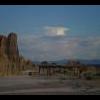-
Posts
2,251 -
Joined
-
Last visited
-
In the 2011 Super Outbreak, you posted:
Just as an aside-although terrain may weaken most tornadoes, it may not be a good idea to expect that it would weaken all tornadoes. Especially when the dynamics involved are as powerful as they have been today. Cases in point: During the 1974 Super Outbreak a number of the tornadoes tracked over hilly terrain without even noticing it. One western US tornado that formed in UT made it across the Divide in WY which is at 10000 ft elevation causing considerable tree damage. Bellemont and Flagstaff AZ are close to 7k elevation and in the mountain region north of the escarpment of the Mogollon Rim yet last October 8 tornadoes up to EF3 intensity formed in the area doing significant damage. The parent storms actually developed along the base of the Mogollon Rim and moved north where the tornadoes developed.
You are right and people who think a 5,000 foot mountain will "rip apart" a 58,000 foot super cell is putting themselves in danger. It's pretty obvious by the time that cell got to North Carolina, it was after midnight and probably 500 miles from it's power source, the Gulf of Mexico. Those are the factors I believe ended that tornadic storm.
Kenny in Alabama
-
hey, just wondering where you have been? you haven't really been active in the monsoon threads
 the desert monsoon is my absolute favorite and this season has been so productive in terms of consecutive storms that produce rain, and not just lightning...hope everything is ok! please come back to the monsoon thread soon!
the desert monsoon is my absolute favorite and this season has been so productive in terms of consecutive storms that produce rain, and not just lightning...hope everything is ok! please come back to the monsoon thread soon! 




